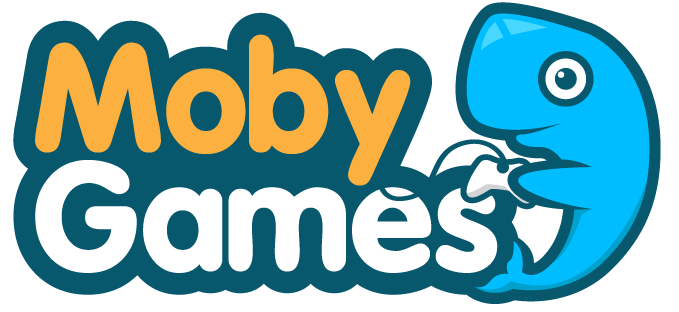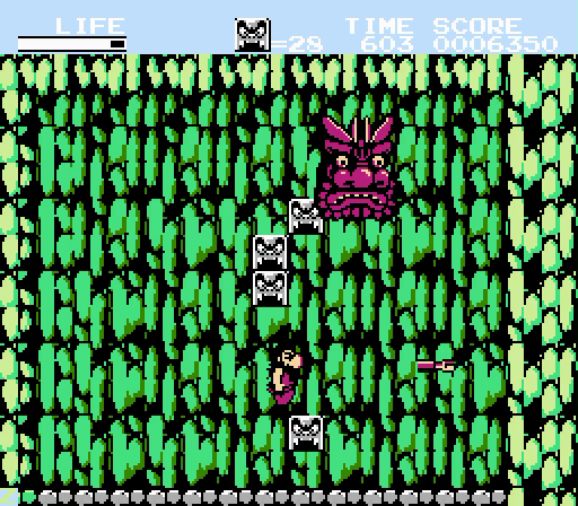Hi no Tori Hououhen: Gaou no Bouken (Fan Translation)
| |
Player's Review
Hi no Tori Houou Hen: Gaou no Bouken (Phoenix - Karma - Gao's Adventure) is a 1987 video game for the Famicom developed by Konami. The game's based on the manga/anime series Phoenix created by renowned Japanese manga artist Osamu Tezuka. Tezuka considered Phoenix his life's work.
The Famicom game is based primarily upon the fifth volume of the saga (entitled Karma). As a child, a young boy named Gao lost an arm and an eye, and as a result, from a young age he was treated harshly by peers and adults alike. The constant ridicule and persecution caused Gao to become bitter, and hardened, eventually turning to a life as a thief. Angry and resentful, Gao learns that no humans will give him a chance for a happy life, so he does whatever is necessary to survive, including murder. However, he reveres nature and will go out of his way to save the smallest insect's life. In spite of his wicked and corrupt lifestyle, Gao met a woman who saw goodness in him, and the two were married. However, one day, over nothing more than a trifling disagreement, Gao lost control of himself, and killed his wife. Realization of what he had done caused Gao to deeply regret his wicked deeds, and reform his behavior. Gao encountered a Buddhist monk who helped him change his ways, and discover his passion for sculpting. Renouncing his previous life of violence, Gao became a Buddhist sculptor, devoting himself to the creation of magnificent sculptures renowned for the raw and powerful emotions he was able to invoke in his work. Throughout his life he crosses paths with another sculptor whose arm Gao once slashed. They each have they own encounters with the Phoenix, whose blood grants immortality to any human that drinks it. Inspired, Gao devotes himself to the creation of a magnificent phoenix sculpture. However, shortly after finishing the sculpture, it was stolen from him, broken into 16 pieces, and hidden in different time periods of the past and the future. In order to recover the 16 phoenix sculpture pieces, Gao embarked on a perilous journey that would take him through space and time.
This is an action-platforming game. The player's objective is to guide Gao through each of the game's 16 levels to collect the 16 artwork cards from each stage which, when fully assembled, display the picture of the Phoenix. Many stages reference scenarios from other volumes of the Phoenix saga, and take place in the future as well as in the past. Some stages are linearly connected, while other stages from other time periods can only be accessed by finding a hidden warp that leads from one stage to another. At Gao's disposal are his chisel (which he originally used to sculpt gargoyle head statues), and the gargoyle heads which he can deposit to form makeshift platforms and barricades. The game ends when all 16 cards are collected, and the Phoenix is revealed.
There are a couple important things to know about this game's controls: you can crush destructible blocks beneath you by crouching and stomping (jumping) on them a few times. You can make Gao kill himself by pressing Select button, which is useful if you trap yourself but can be a nasty surprise if you don't know about this function.
Items: sack - gives points; sea shell - increases maximum hit points by one (up to eight); onigiri (rice ball) - restores all hit points; mirror - makes Gao incorporeal, which allows him to pass through walls and enemies without harm; necklace - kills all enemies nearby; phoenix's feather - protects Gao by killing all enemies that touch him; talisman - stops time; Gao figure - gives extra life; caped figure - increases maximum hit points to eight and restores all hit points.
I try to collect all treasure (except when revisiting a stage) and to show all secret doors. I didn't find a thorough guide for this game, so I don't know if there's something I missed.
The Famicom game is based primarily upon the fifth volume of the saga (entitled Karma). As a child, a young boy named Gao lost an arm and an eye, and as a result, from a young age he was treated harshly by peers and adults alike. The constant ridicule and persecution caused Gao to become bitter, and hardened, eventually turning to a life as a thief. Angry and resentful, Gao learns that no humans will give him a chance for a happy life, so he does whatever is necessary to survive, including murder. However, he reveres nature and will go out of his way to save the smallest insect's life. In spite of his wicked and corrupt lifestyle, Gao met a woman who saw goodness in him, and the two were married. However, one day, over nothing more than a trifling disagreement, Gao lost control of himself, and killed his wife. Realization of what he had done caused Gao to deeply regret his wicked deeds, and reform his behavior. Gao encountered a Buddhist monk who helped him change his ways, and discover his passion for sculpting. Renouncing his previous life of violence, Gao became a Buddhist sculptor, devoting himself to the creation of magnificent sculptures renowned for the raw and powerful emotions he was able to invoke in his work. Throughout his life he crosses paths with another sculptor whose arm Gao once slashed. They each have they own encounters with the Phoenix, whose blood grants immortality to any human that drinks it. Inspired, Gao devotes himself to the creation of a magnificent phoenix sculpture. However, shortly after finishing the sculpture, it was stolen from him, broken into 16 pieces, and hidden in different time periods of the past and the future. In order to recover the 16 phoenix sculpture pieces, Gao embarked on a perilous journey that would take him through space and time.
This is an action-platforming game. The player's objective is to guide Gao through each of the game's 16 levels to collect the 16 artwork cards from each stage which, when fully assembled, display the picture of the Phoenix. Many stages reference scenarios from other volumes of the Phoenix saga, and take place in the future as well as in the past. Some stages are linearly connected, while other stages from other time periods can only be accessed by finding a hidden warp that leads from one stage to another. At Gao's disposal are his chisel (which he originally used to sculpt gargoyle head statues), and the gargoyle heads which he can deposit to form makeshift platforms and barricades. The game ends when all 16 cards are collected, and the Phoenix is revealed.
There are a couple important things to know about this game's controls: you can crush destructible blocks beneath you by crouching and stomping (jumping) on them a few times. You can make Gao kill himself by pressing Select button, which is useful if you trap yourself but can be a nasty surprise if you don't know about this function.
Items: sack - gives points; sea shell - increases maximum hit points by one (up to eight); onigiri (rice ball) - restores all hit points; mirror - makes Gao incorporeal, which allows him to pass through walls and enemies without harm; necklace - kills all enemies nearby; phoenix's feather - protects Gao by killing all enemies that touch him; talisman - stops time; Gao figure - gives extra life; caped figure - increases maximum hit points to eight and restores all hit points.
I try to collect all treasure (except when revisiting a stage) and to show all secret doors. I didn't find a thorough guide for this game, so I don't know if there's something I missed.







No Comments have been Posted.